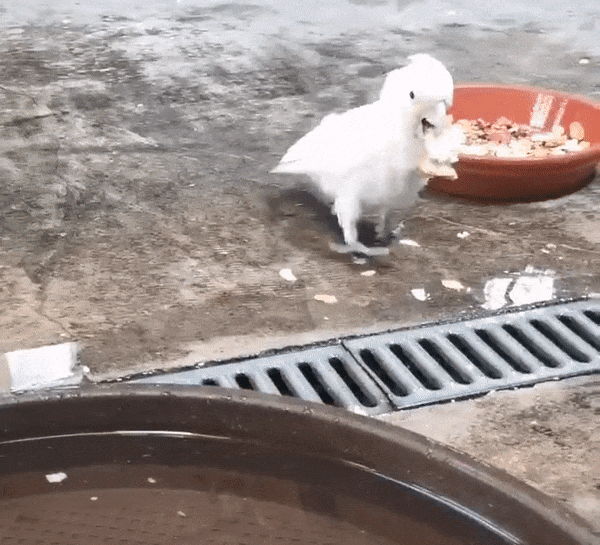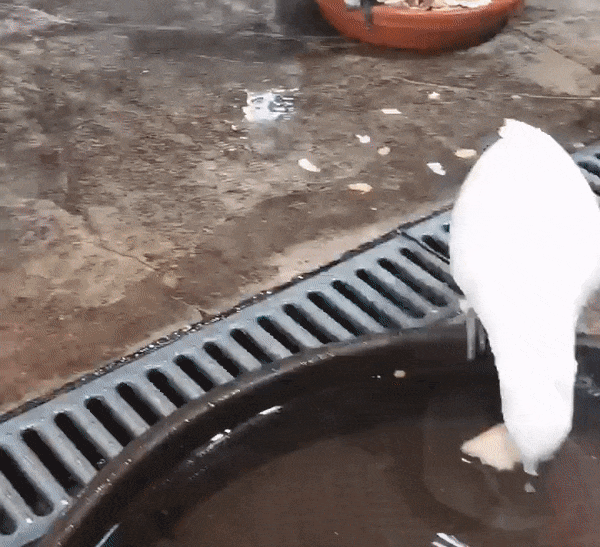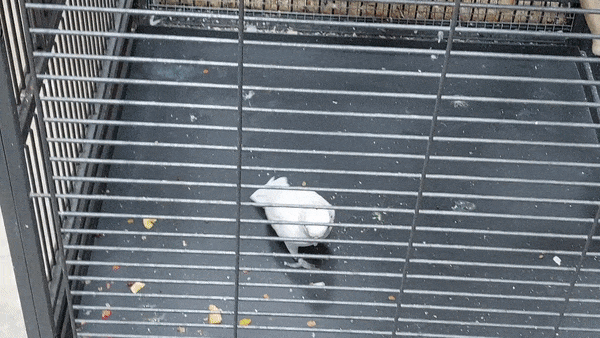Watch Cockatoos Dip Their Food in Water to Make It Soggy
A new study marks the first time that dunking behavior has been documented in parrots

If you’ve ever dunked a hard cookie in milk, tea or coffee before taking a bite, you might have more in common with a cockatoo than you think.
A pair of researchers has recently documented white Goffin’s cockatoos soaking rock-hard biscuits called rusk in water to improve their texture before gobbling them up. The study, published Wednesday in Biology Letters, marks the first time this food preparation behavior has been recorded in parrots.
Cockatoos are cognitively complex birds that can learn to perform a variety of problem-solving tasks. In experiments, cockatoos have danced to music and video called other parrots. In the wild, a population in Australia has taken to raiding trash bins—a behavior that has spread through observation and imitation.
At the Goffin Lab at the University of Veterinary Medicine Vienna, researchers design extensive experiments to test the cognitive processes of nearly 20 resident Goffin’s cockatoos. This year, the lab reported that cockatoos can use, recognize and transport a toolset. They can even combine tools together to complete tasks. In 2022, the team tested this ability by setting up a makeshift putting green that would reward the birds for “golfing”—or placing a ball on the green and pushing it with a stick.

Their most recent discovery, however, was stumbled upon serendipitously, writes Emily Anthes for the New York Times. As the birds ate their lunchtime meal of dried fruit, seeds, cornflakes, bird pellets and rusk one day last summer, researchers noticed that a male bird, named Pipin, was dipping his rusk in the water tub usually reserved for bathing and drinking. Two other parrots seemed to enjoy soggy rusk.
“Sometimes we get gifted with accidental things that just happen,” biologist Alice Auersperg, the head of the lab, tells the Times.
Over 12 days, Auersperg and her colleague Jeroen Zewald documented which of the 18 birds dunked which foods. They discovered that the dry rusk was the most popular item the birds dipped and that the animals were willing to expend considerable time and effort to make sure their food was sufficiently soggy before eating it. Sometimes, they even physically climbed down nearly four feet to retrieve food that had fallen to the bottom of their cage and brought it back up to their perch where the water bowls were located.
Overall, seven of the birds appeared to dunk their food, and they left it in the water for an average of about 23 seconds—though the soaking time varied considerably.
“They were willing to wait for it to soak,” lead author Zewald tells the Times. “And that takes a lot of impulse control.”

Researchers have suggested five main motives for dipping food in water prior to eating it: washing off dirt, improving the flavor, drowning prey, transporting liquid away like a sponge or texture improvement. The scientists’ observations didn’t seem to match the first four motives, so they concluded the cockatoos must have preferred the texture of soggy rusk to dry rusk.
Dipping food in water has been documented in a variety of species. Raccoons, for example, dunk their food to feel the texture of it more easily before consumption—contrary to the popular belief that they “wash” their food. In birds, dunking has anecdotally been observed in more than 25 species in the wild, including grackles.
Simon Reader, a biologist at McGill University in Canada, has researched grackles dunking food but was not involved in the recent study. He tells the Guardian’s Nicola Davis that he’s surprised this is only the first time the behavior has been documented in parrots.
“We found that dunking was very rare in the wild in Carib grackles, but it was less innovative than we thought—virtually all birds could do it if you placed them in perfect conditions, with dry food, water and away from the risk of the food being stolen,” he tells the publication. “Like these parrots, dunking seems to be something they employ depending on the costs and benefits at the time.”
/https://tf-cmsv2-smithsonianmag-media.s3.amazonaws.com/accounts/headshot/MargaretOsborne.png)
/https://tf-cmsv2-smithsonianmag-media.s3.amazonaws.com/accounts/headshot/MargaretOsborne.png)